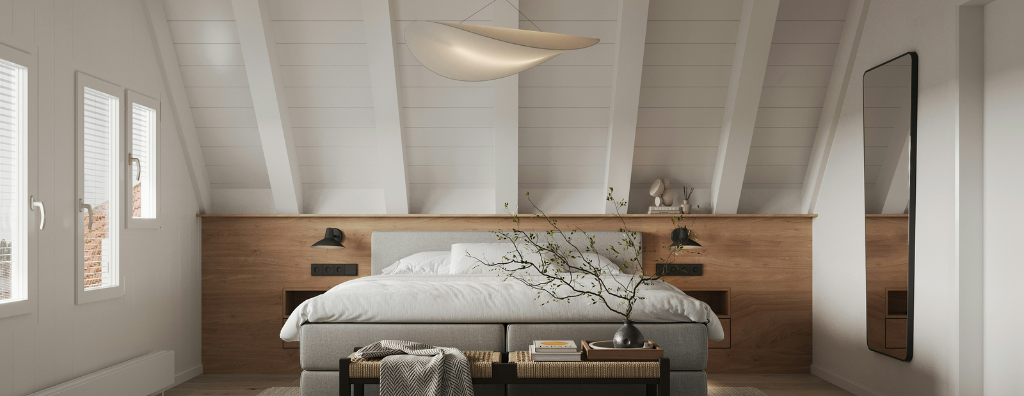If the words “Scandinavian design” bring images from IKEA catalogs to mind, you’re not alone. But if that’s all you can imagine when you picture interiors inspired by this region of northern Europe, you might be missing out. If you’re looking to incorporate elegant functionality, natural elements, and a feeling of coziness into your home, Scandinavian interior design could very well fit the bill. Read on to see if the elements that make up this staple of interior design appeal to you.
Keep It Simple
Many confuse the Scandinavian aesthetic’s emphasis on simple and minimalist design for stark, cold, and empty. But white space doesn’t have to be boring. A clean and airy room draws focus to the few pieces in the space, allowing you to invest in high-quality items that are as beautiful as they are functional. Think comfy sectional sofas with clean lines and sleek but durable side and coffee tables.
Maximize Light
In the winter, daylight hours are in short supply in large parts of Scandinavia, which means the people who live there make the most of those hours—even during warmer seasons. You can emulate this style by keeping window treatments to a minimum and eliminating items that block natural light, such as large furniture or appliances in dark colors. If privacy is an issue, use sheer, light-colored curtains. If your home lacks natural light, you can brighten up your lived-in spaces with white or very light paint colors, textiles, and furniture.
Go Natural
The Scandinavian relationship with nature is reflected in home décor as well. Light-colored wood accents create a natural ambience inside while maintaining an airy feeling. Exposed rafters, furniture made of white oak or beech, and hardwood floors in a pale color are excellent ways to incorporate this aesthetic. Adding greenery either with potted plants or fresh flowers contributes to the Scandinavian feel as well as cleaner indoor air. If you have pets, make sure the plants you bring inside aren’t toxic for your furry family members. Spider plants, ferns, and succulents are all generally safe options.
Stay Neutral
When it comes to color, Scandinavian design is all about subtle and monochromatic shades. In the spirit of bringing the outdoors inside, consider earthy tones such as stone, sand, sky, and—you guessed it—white. That’s not to say bright colors are off limits, but think of them as accents, and stick to no more than one or two bold colors. Picture a room painted in a very light taupe, windows framed with sheer white curtains, furniture in shades of ecru and eggshell, a light-stone fireplace, and then pops of your favorite deep blue or green.
Embrace Hygge All Year
During long, dark winters, residents of Scandinavia spend much of their time at home with friends and family. The concept of hygge was born from these long months indoors, as people yearned for warmth and togetherness. Though most of us associate hygge with winter, coziness is a concept that can be embraced year-round with the right design touches.
One of the easiest ways to add extra comfort with the flexibility you need to make it work in each season is with textiles. Area rugs and pillows in light fabrics are great in warmer months. When the weather cools down, swap them out for heavier, softer versions and then add cozy throw blankets.
 Facebook
Facebook
 X
X
 Pinterest
Pinterest
 Copy Link
Copy Link



